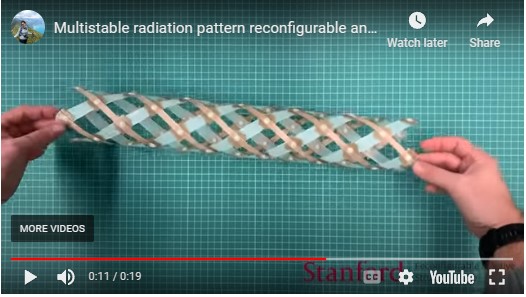Researchers from Stanford and the American University of Beirut have developed a lightweight, portable antenna to help first responders communicate in disaster-prone areas. According to researchers at Stanford, cell phone and radio towers often take the brunt of the abuse during natural disasters, ending up damaged or destroyed.
The researchers developed the portable antenna with “space” in mind – borrowing from techniques used for tech in orbit. It is lightweight at 1.4 ounces and small (1 inch tall and about 5 inches across folded). The compact device can be set up to “communicate with satellites or devices on the ground without using additional power” for relief and rescue efforts following a disaster or in underdeveloped regions.
“The state-of-the-art solutions typically employed in these areas are heavy, metallic dishes. They’re not easy to move around, they require a lot of power to operate, and they’re not particularly cost-effective,” said Maria Sakovsky, an assistant professor of aeronautics and astronautics at Stanford. “Our antenna is lightweight, low-power, and can switch between two operating states. It’s able to do more with as little as possible in these areas where communications are lacking.”
The composition of the antenna is reminiscent of a “finger trap” toy – a helix-based model made from fiber composite, with multiple strips of material crossing in spirals. The format allows researchers to adjust the pattern and power of signals by lengthening or shortening the shape.
On the small end, the antenna can coordinate with a high-power satellite and, when expanded, acts like a WiFi router. The specific size and shape of the antenna design will determine which frequencies it can communicate across.
“The frequency you want to operate at will dictate how large the antenna needs to be, but we’ve been able to show that no matter what frequency you operate at, you can scale this design principle to achieve the same performance,” Sakovsky said.
The antenna was tested at both universities. However, to try it in the field, it would need to be paired with a transceiver to send and receive signals, a ground plane to reflect radio waves, and other electronics, according to Sakovsky. These additions would bring the antenna’s weight up to about 2 pounds.
As a next step, Sakovsky and her fellow researchers have their sights set even higher: on space. “This holds a lot of potential for replacing multiple antennas on a satellite with a single one,” she added.





Reader Interactions